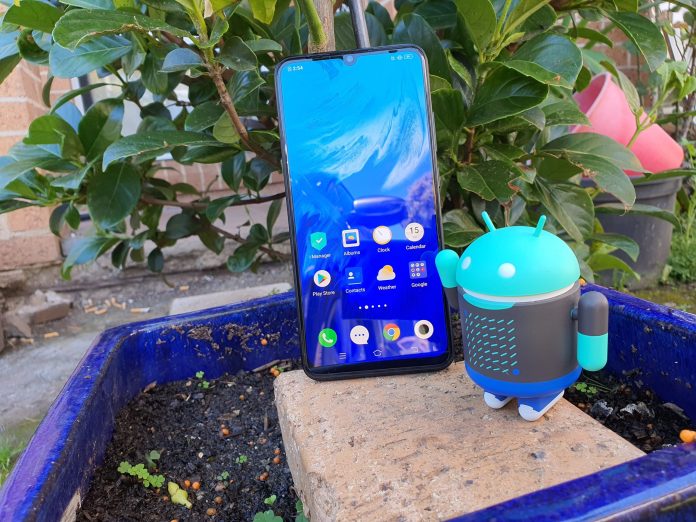Vivo, a relative new entrant to the Australian market, has been pushing more into the mobile market from the budget to the mid and high end range, with specs to prove they can take on its competitors.
Vivo has launched its latest device, the Vivo X50 Lite, looking to help cap off the success of the its older sibling, the X50 Pro which launched back in August. The new younger sibling brings with it rear quad cameras and a modern, stylish and sleek design with a long last battery for a reasonable price.
The design
Opening the box to the Vivo X50 Lite and holding the device in my hand for the first time is quite comfortable and feels about the same weight as the Galaxy Note 10+.
Talking about the design of the X50 Lite, it seems to be made out of a polymer plastic housing, with the front of the device housing the 6.38-inch AMOLED display offering a 1080 × 2340 resolution. Underneath the display is the fingerprint sensor which was more sensitive and accurate than the Galaxy Note 10+ in-display fingerprint sensor. Personally I still prefer the physical fingerprint scanner on the rear of devices as I find them more easily accessible and easier to use.
The front display also houses the 16MP front facing camera housed in a teardrop design in the middle top of the display and the front speaker grill located just above this in the middle going about 2-3 inches long and is cleverly disguised.
The top of the device has a 3.5mm audio jack for those that prefer the wired headphone option, with the top microphone used for noise cancellation located just next to this. The right hand side towards the middle houses the volume rocker (up and down) with the standby/power button located just below the volume rocker.
The left hand side between the top and middle houses the dual SIM tray that can also hold a MicroSD card as long as you don’t want to use a second SIM card.
The rear of the X50 as stated is made from a polished, almost glass like polymer plastic housing that can show fingerprint marks very easily, though this can be avoided via the included silicon plastic phone cover.
The camera module is diamond shaped and slightly protrudes out. It houses the quad cameras made up of 48MP main wide camera along with an 8MP ultra wide lens, 2MP macro sensor and 2MP depth sensor and with the single LED flash located just underneath the diamond shaped camera housing.
The internals
Powering the Vivo X50 Lite is a octa-core Qualcomm SDM665 Snapdragon 665 chipset with Adreno 610 GPU along with 8GB RAM that looks good on paper and certainly is great if you’re just going between social media apps, YouTube, music apps and text messaging.
However if you’re into playing games on this device then you’re in for a bit of disappointment as when trying to play PUBG and a couple of other games there was bit stuttering and delays with frame rates and processing noticed.
There is also 128GB of onboard storage, which can be expanded to 256GB via MicroSD card. That being said I did have an issue with one of my MicroSD cards being denied by the device, however my backup MicroSD card did take to the device swimmingly.
Battery-wise, the X50 Lite comes with a 4,500mAh battery and is very capable. I found with some medium usage, I would still have around 50-60% battery life at the end of the day. Of course with high usage this would be a bit lower.
It is interesting to note that the X50 Lite does come with a fast charger, however to fully charge the device can take up to 2-3 hours, for about 50% in about an hour and for 30% in half an hour or so. Personally because of this I wouldn’t really classify it a true fast charger given the time taken to full charge the device.
The Vivo X50 Lite also comes with Bluetooth 5.0 along with Wi-Fi 802.11 a/b/g/n/ac that is dual-band like most current devices. There are also NFC capabilities and I welcome its inclusion given the pandemic has lent itself to more NFC payments than before.
Light, Camera, Action
With any device, cameras and the inclusion of multiple rear cameras are expected in this day and age and as stated previously, the X50 Lite comes with rear quad cameras made up of 48MP main wide camera along with an 8MP ultra wide lens, 2MP macro sensor and 2MP depth sensor housed in a diamond shaped housing.
Featured modes in the camera software include night, portrait, normal photo, video which can record up to only 1080p, AI 48MP, panorama, Live photo, slo-mo, time-lapse, pro and doc scan.
Photos taken with the rear quad camera were ok, decent with colours right but details slightly lacking a little bit, though HDR does kick in when needed. Though looking back at some of the photo’s, especially not in full direct sunlight or in the dark seem to be a little cool with a slight bluish hue to them.
The night feature certainly did help take some fairly decent shots at night, but for me its not as vivid as the night shot on the realme 7 Pro I reviewed as couple of weeks ago.
With bokeh mode though, the Vivo X50 Lite’s depth camera sensor did a fairly decent job of detecting edges, along with blurring out the right areas.
The front facing camera, which is housed in a teardrop design, is a single 16MP camera and is capable of snapping those all important selfies. However in low light, those selfies can be a bit grainy and while there is the on-screen flash, it really doesn’t help much or make those pictures turn out less grainy.
Also, there is no bokeh mode for the front facing camera which is quite odd given you would expect this on a front facing camera or at least a feature for it. Yes there are various beauty filters, it’s not the same really should you wish to blur the background.
The Fun of Software
The Vivo x50 Lite runs Android 10 out of the box, though like every other OPPO-related device, runs its own version of ColorOS and this is no different with the x50 lite, with the UI called funtouchOS.
Talking about the software, the X50 Lite comes with its own apps alongside the usual Google apps, such as iManager that acts like Samsung’s Knox program to provide security but also optimisation, easyshare that is sort of a cross between Android Beam and Airplay, themes that allows you to choose various themes and backgrounds for your device, vivo.com which shows your products and services from the company, feedback that allows you to share and talk to reps from Vivo to get advice and support for your device, compass, FM radio, Recorder, Calendar and Video.
Personally, I find this many company branded apps just a little too much and I would like to see the company look at possibly removing or replacing these with Google’s own apps if possible. This can help reduce possible conflicts between Google’s own apps and the company’s for the user as you cannot uninstall Vivo branded apps.
Should you consider buying one?
I’ve been honestly thinking of this and while on paper, the Vivo X50 Lite does offer some pretty decent specs, in practical and real life, there are some downfalls that could lead to users looking elsewhere.
There are a couple of notable exceptions, namely the lack of gaming capacity with the display and processor, but also the UI which I do feel is too OPPO-esk at the end of the day and needs a major rework. Granted while most who might use OPPO devices might find the UI familiar, for those who don’t it could become frustrating.
Overall I do think there is some value on this device but there could be better alternatives out there for the similar price bracket such as the Motorola G9 Play or even G8, or the Samsung Galaxy A21s or the Galaxy A11.
The Vivo X50 Lite is available from JB Hi-Fi, Officeworks, Big W, Amazon, Mobileciti, and The Good Guys for $398 in either Nebula Blue or Jade Black colours.






























